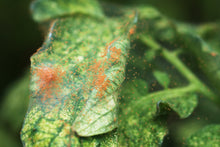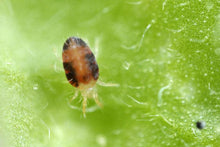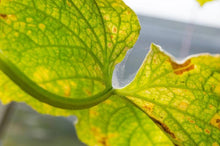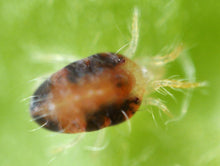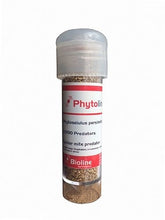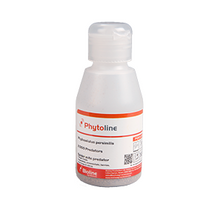
Phytoseiulus is the number one method for controlling glasshouse red spider mite, and is widely used by both amateur gardeners and commercial growers.
This species is a highly active hunter and has become a standard spider mite treatment in many crops. It develops twice as fast as the spider mite at humidity levels that are above 60% (unfavourable to spider mites, favourable to Phytoseiulus), which allows a rapid control of outbreaks.
A female Phytoseiulus can destroy ten spider mite females and their young in just seven days under optimum conditions. The tube holds living predator mites hidden in a bran carrier. You may not be able to see anything but the carrier as the mites are very hard to see with the naked eye. The tubes contain approximately 2,000 mites.
Orders placed by 10am Monday will be despatched later in the week.
Further information
How much do I need?
When to use
How to use
They are tiny predatory beneficial mites, shiny orange and relatively fast moving. They feed on the eggs, young, and adults of the "Two Spotted mite" or Glasshouse Spider mite, giving excellent control. They are very, very small, about the same size as their prey and you won't be able to identify them properly without a microscope. There are other types of spider mite, for example the citrus spider mite, which Phytoseiulus isn't as effective at treating. It's therefore important to know what type of spider mite you have. Amblyseius Andersoni can be used in these situations. Spider mites can be spotted more easily by looking for the damage than looking for the culprits. They pierce the leaf cells with their mouthparts and suck the plant juices resulting in discolouration of the leaves and sickly looking growth, and in worst cases the death of the plant. The leaf damage initially results in a fine speckling effect on leaves where the cells have died. The pattern of the mottling varies from plant to plant, so on strawberries you will see brown spots on the underside, and in citrus these develop into yellow patches throughout the leaf. On some plants with tougher leaves the spider mite eats young growth and flower buds and may be even more difficult to spot. Indoors and in warmer months it is a good idea to inspect vulnerable plants every week and deal with the first signs of mite infestation immediately. Where possible, remove infested leaves, buds and stems because this will initially reduce numbers. If there is any part of the plant which is covered in cobwebs then regrettably it will need to be sacrificed as it will not recover. Spider mites prefer dry environments, so spraying the infested areas of a plant with water and damping the greenhouse floor areas will raise the humidity and hopefully slow the infestation rate. When the infestation becomes advanced, fine webbing appears on new growth. Spider mites are arachnids (spiders) and can spin very extensive fine webs. The webbing acts to shield the colony like a blanket, and it also provides a series of ladders or netting which allow the mites to crawl from stem to stem. Where webbing is widespread the leaves will typically turn brown and drop off because of the extent of the cell damage.
The tubes contain 2000 mites, the application rate is 5 to 10 mites per square metre.
This predator is effective at a wide temperature range above 15°C and can be used outdoors as well. The adults and young stages feed voraciously on adults and eggs of the two spotted spider-mite and populations of Phytoseiulus increase dramatically at 20°C - although over 30°C they don't breed so fast and are not so effective. This generally means application end April until September indoors (unless extra light and heat is in use), or June and July outdoors. They work very effectively and can achieve a complete clean up in several weeks if the conditions are right.
The mites should be used straight away - the fresher the better! On receipt of your order, please read the instructions before opening the tube. Mix the predators evenly through the carrier material by gently rotating and tilting the tube. Remove the lid and scatter the husks on the leaves among the affected plants. You are aiming to get the predators as near their prey as practical. If dealing with leaves that are high up (eg a peach tree on a wall) then a useful tip is to shake the mites into little paper cones that can act as hammocks in the branches. If they are in the tube without food there is a danger they will eat each other, or die of hunger. If you have to wait a short while before putting them out then keep the tube at 6 to 10°C. If too cold they could perish, if too hot they could become too active and run out of food. Apply in higher concentrations at the pest 'hot spots' they will work their wonders there and then move off to clear up smaller, less progressed colonies.






